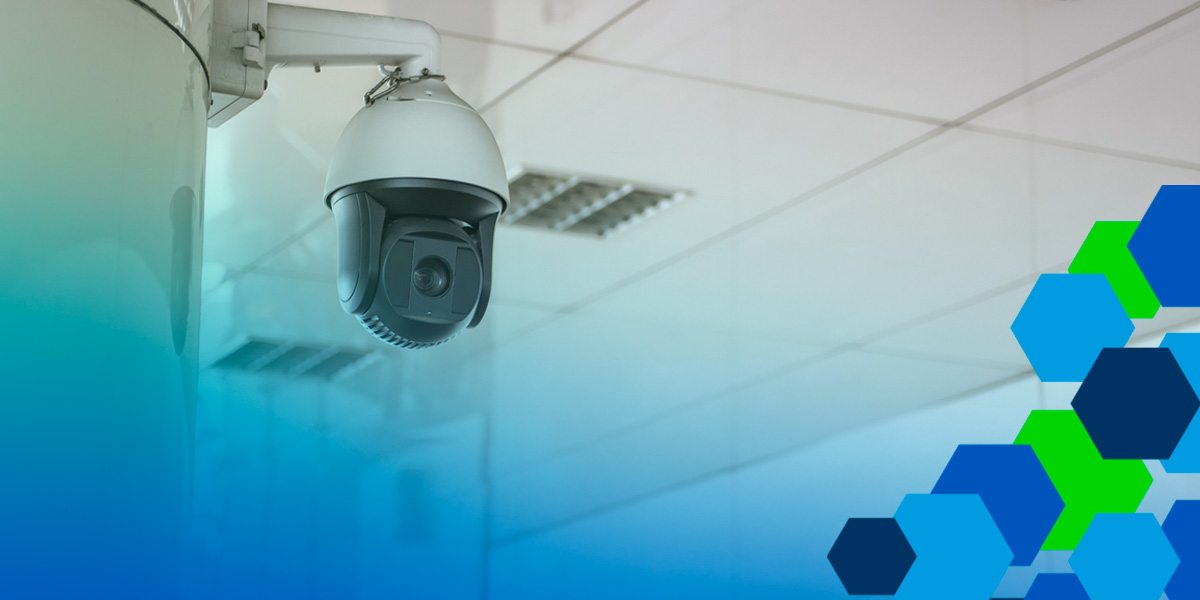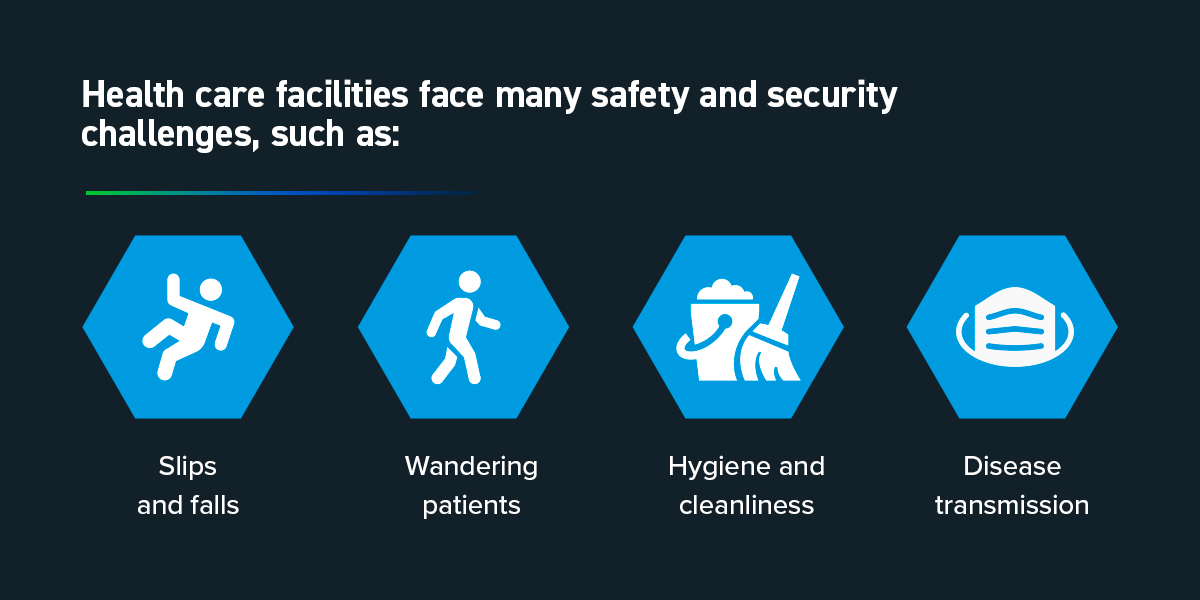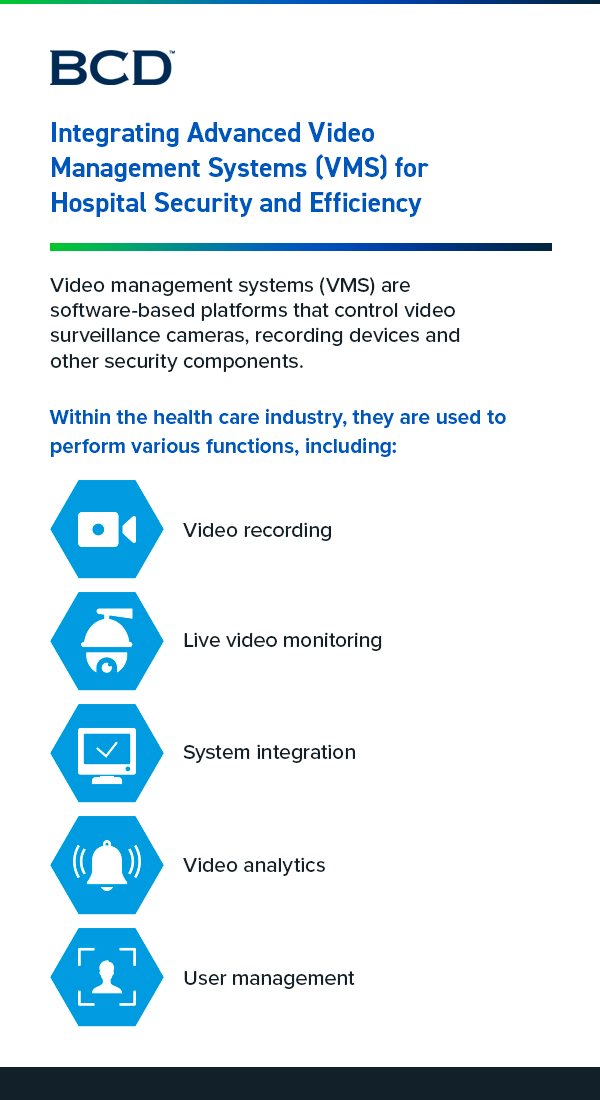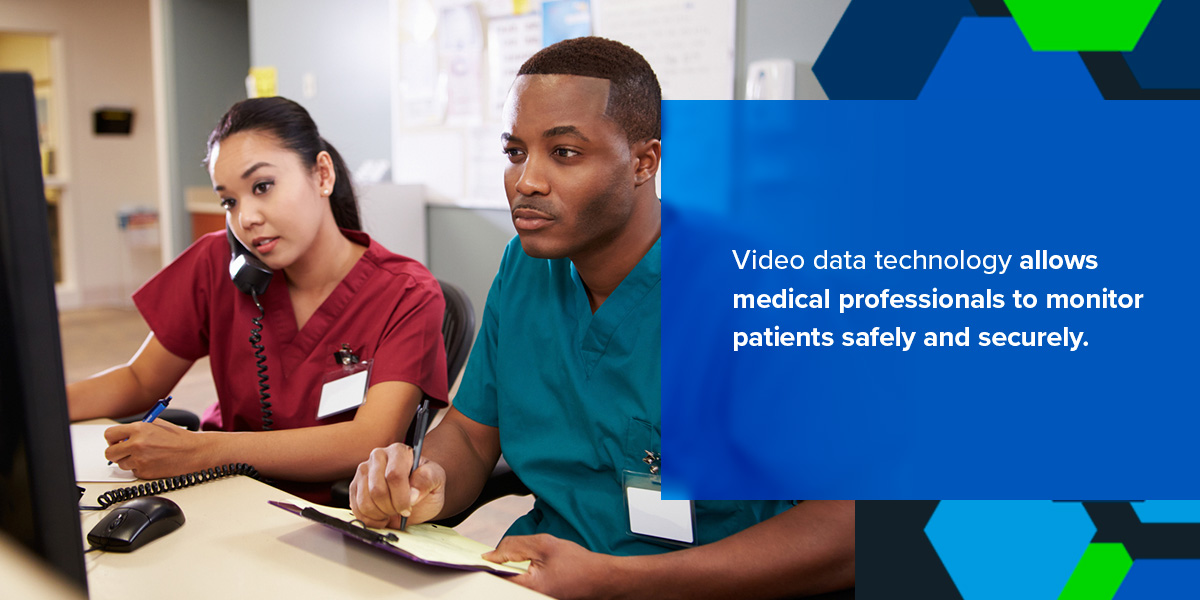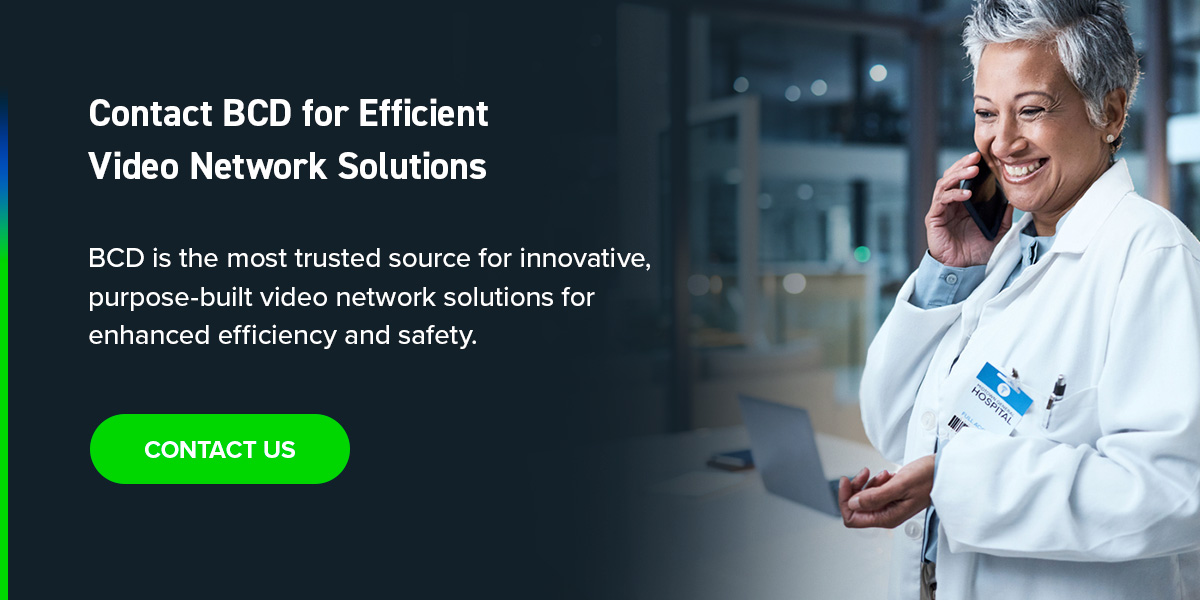Healthcare institutions have invested in technologies for many years to improve efficiency and patient safety. These innovations have developed with time, offering practical solutions to emerging challenges. One such technology is video analytics, which has become a priority for most healthcare organizations today.
Advanced video technology and data analysis improve operational efficiency and safety in hospitals. They enable data collection, which you can leverage to optimize processes, streamline workflows, and improve patient care.
This guide evaluates common healthcare challenges, the application of big data and video analytics technology in health care, and the strategies for leveraging such innovations.
Common Health Care Challenges
Healthcare institutions face many challenges, including:
1. Safety and Security
Healthcare facilities face many safety and security challenges, such as:
- Slips and falls: Injuries related to slips and falls are commonplace in most health care facilities, especially when patients are left unattended. Although some hospitals and nursing homes have emergency call buttons, weak patients may find it challenging to reach them. Motion detection analytics sends instant alerts, enabling health care workers to respond to emergencies.
- Wandering patients: According to research, approximately 36% of people with dementia wander off, exposing them to various risks. When such incidents occur in facilities with inadequate surveillance systems, it can be challenging to track the patients down. Video surveillance and analytics enable workers to monitor people with wandering tendencies, keeping them safer.
- Hygiene and cleanliness: The prevalence of contagious and drug-resistant superbugs, such as Methicillin-resistant Staphylococcus aureus (MRSA), poses health challenges in most healthcare facilities. These diseases can spread quickly unless the area is regularly and thoroughly cleaned. With systems like video analytics, staff can monitor cleaning activities and ensure they comply with the required standards.
- Disease transmission: Disease transmission is a concern in the healthcare industry, especially since the COVID-19 pandemic. This challenge has prompted medical professionals to invest in personal protective equipment (PPE) monitoring and detection systems to reduce exposure to illnesses. The technology uses computer vision algorithms to analyze video feeds and detect PPE violations.
Besides the above-listed, there are also security concerns like unauthorized access and theft in organizations that still use conventional safety systems. Data-driven video networks can enhance security by automatically detecting and alerting staff of suspicious activities and breaches in real-time.
2. Workflow
Hospitals are complex environments with multiple departments, staff and patients. Combining these various facets of the organization can affect workflow, making it crucial to optimize processes and allocate resources efficiently. Video analysis provides invaluable insights, assessing staff-staff and staff-patient interactions and equipment movements to identify patterns and bottlenecks. With this information, management can streamline operations, reducing time while saving resources.
For example, video analytics can decrease patient wait times by monitoring heavily used machinery, such as X-rays and MRIs, or overcrowding. This approach minimizes situations where injured or sick patients stand in lines waiting for hours to access a machine for diagnosis.
3. Staff Performance
Medical professionals must adhere to high standards, which is challenging when organizations over-rely on conventional methods. Most healthcare institutions today are investing in intelligent video analytics, which allows them to reduce workload and human errors. These modern innovations can analyze activities, measure adherence protocols such as PPE detection, and assess response times during critical situations. The information can help identify areas of improvement and guide decisions concerning training and support, and resource allocation to ensure consistent and efficient care delivery.
4. Asset Management
Healthcare organizations have valuable assets, including medication, medical equipment and supplies. Video analytics can automatically monitor inventory levels of both PPE and medicine. The system can also enable you to detect anomalies such as misplaced and missing items, unauthorized personnel engaging with prescription drugs, and even detecting low inventory levels of medicine or PPE. These capabilities ensure the efficient utilization of material resources and inventory management, reducing losses and theft.
What Are the 4 Vs of Big Data Analytics in Health Care?
To understand the application of video and big data analytics in health care, it’s crucial to know the four Vs and how they impact the industry:
- Volume: The amount of data collected is critical to data analytics. The analyst must ascertain how much data they require depending on the size of the facility and the purpose for collecting the data.
- Velocity: Refers to the speed at which the system collects and analyzes data. It’s essential for some data, such as patient vital signs in the ICU, to be updated in real-time and displayed immediately at the point of care. Other datasets, such as patient collection rates and readmission reports, may be updated leisurely without significant impact.
- Variety: Refers to the points of reference used to collect data. The sources may include medical records, radiology images and patient behavior.
- Veracity: Refers to the information’s reliability. This feature sets the standard for data quality in the healthcare industry regarding quality and accuracy.
Integrating Advanced Video Management Systems (VMS) for Hospital Security and Efficiency
Video management systems (VMS) are software-based platforms that control video surveillance cameras, recording devices and other security components. Within the healthcare industry, they are used to perform various functions, including:
- Video recording: VMS lets healthcare workers record video feeds from multiple cameras. The video may be stored on cloud systems for optimal security and controlled accessibility. Authorized persons may search and retrieve recorded videos on several devices.
- Live video monitoring: The technology enables live video feeds from surveillance cameras, remotely or on-site, in real-time.
- System integration: The system can integrate with existing systems, including security platforms and asset management systems. This capability allows for centralized management.
- Video analytics: VMS systems integrated with artificial intelligence (AI) platforms can perform video analytics, such as detecting and alerting security personnel of incidents and suspicious activities.
- User management: The platform can enable user management, allowing administrators to assign different access levels to users.
How Does Data-Driven Decision-Making Impact Healthcare?
Here are six ways data analytics can be used to improve healthcare outcomes:
1. Safety and Security
Data-driven video networks improve safety and security in healthcare institutions in several ways, including the following:
- Violence reduction: A survey conducted by the American College of Emergency Physicians (ACEP) revealed that 85% of emergency physicians believe that the violence rate experienced in emergency departments has increased over the years. While most medical institutions have CCTV cameras, detecting each possible violent act is still challenging, meaning most incidents are only discovered after they occur. With AI-powered video solutions, hospital security personnel can handle multiple camera streams simultaneously and detect violence more effectively.
- Slip and fall detection: With the rise of slips and falls in medical institutions, organizations are adding fall detection technologies to their safety and security systems. These innovations can differentiate between someone sitting or kneeling and falling. Although it may not prevent patients from falling, it helps medical personnel respond quickly.
- Weapon detection: Although infrequent, gun threats and attacks make healthcare facilities unsafe for patients, workers and visitors. These occurrences make it essential to deploy tools capable of detecting weapons proactively. That way, security personnel can instantly respond to intentionally dangerous situations, minimizing harm.
- Access control management: While hospitals, clinics and nursing homes must be welcoming for patients, visitors and staff, it’s equally crucial to control access within various areas of the premises. Workers, patients and visitors have different access rights to areas like pharmacies, emergency rooms and wards, which can be efficiently managed and monitored using intelligent video analysis systems.
2. Surgical Accuracy
Gone are the days when visual clarity was a challenge in surgical procedures and post-operative reviews. AI-powered solutions like ProHawk Vision drastically improve medical imaging through image enhancement. The platform corrects the darkness and obstructions often seen through surgical cameras so surgeons can see details on a more vascular level. This reduces the time needed to perform certain surgeries and improves overall accuracy.
Medical professionals can enrich, enhance and review recorded surgical procedures better than before. The technology reveals subtle details, so professionals can more quickly recognize various medical conditions, such as:
- Polyps
- Lesions
- Vascular and mucosal patterns
This process often removes the need for a traditional biopsy. ProHawk Vision uses standard optical sensors for recorded and live video. There is no need for proprietary sensors or special laser lights.
3. Operational Efficiency
Video networks improve efficiency by streamlining operations. It can provide valuable insight into staff performance, which you can utilize to enhance internal processes. You can track movements within the facility and examine waiting times and patient navigation patterns. This information can assist in optimizing appointment scheduling or implementing other measures to reduce patient wait times.
Video data analysis can improve resource acquisition, allocation and utilization by identifying priority areas. For example, you can determine the kind of personnel, equipment or supplies each sector needs to eliminate waste and increase your return on investment (ROI). Moreover, video data analysis can facilitate effective communication and collaboration between teams and departments. Access to video networks allows health professionals tools to interact worlds apart and share valuable information.
Finally, medical facilities can utilize video networks to monitor and assess the quality of health care their staff provides. Quality assurance helps you identify gaps in processes and deviations from best practices, which you can correct to improve service delivery.
4. Medical Training and Research
Medical professionals continue to seek opportunities to improve their knowledge and skills. While traditional methods have helped for years, healthcare organizations can achieve more with modern innovations. Video data can assist medical students and professionals in accessing a vast library of recorded procedures and patient interactions to enhance learning.
Video networks provide new and compelling learning experiences through remote and collaborative information sharing. Additionally, they can support simulation-based training, providing trainees with practical learning solutions. Professionals can share best practices and case studies to improve their technical skills.
In diagnostics and research, video data analysis can assist professionals in diagnosing medical conditions effectively by leveraging visual cues, physical examinations and patient behavior. Researchers can also study treatment effectiveness, patient outcomes and disease progression with a visual data-driven approach.
5. Compliance
Video data is a vital source of documentation for healthcare institutions. It helps you keep accurate information records, such as patient interactions and procedures. Maintaining such records can offer legal protection and help ensure compliance with regulations like the Health Insurance Portability and Accountability Act (HIPAA). Video networks also provide a secure way to keep the information, which is essential in protecting patient privacy. Video data capabilities combined with cloud systems can improve access management and recovery.
6. Decision Making
The machine learning and data analytics capabilities of video networks can help healthcare organizations make informed decisions. Predictive analysis is helpful in many ways, including:
- Identify at-risk patients
- Forecast patient conditions
- Examine disease trends and potential variations
- Detect disease progression and comorbidities
- Resource allocation
The information gathered can help medical professionals and managers of healthcare institutions make informed decisions. Data-backed decisions can improve the quality of services and facilitate adequate medical facility and staff management.
Maximizing Patient Care and Privacy Through Video Monitoring and Analytics
Privacy is a significant concern in the healthcare industry, and for good reason. Patients must be comfortable sharing their medical challenges with healthcare workers without worrying about their personal information entering the public domain. Secure, reliable video storage solutions makes this possible, primarily when proper safeguards are implemented. The technology offers a good balance between quality health care and patient privacy.
Video data technology allows medical professionals to monitor patients safely and securely. For example, workers can disable recording or blur images to conceal identities in compliance with ethical rules and privacy regulations. Moreover, medical professionals may seek patients’ consent to use interactions or procedures for specified purposes such as education and research. These capabilities strike the balance needed to maximize patient care while ensuring optimum confidentiality.
Limitations of Video Surveillance in Healthcare Facilities
Below are some limitations of healthcare video solutions and ways to resolve them:
- Privacy intrusions: Some users have concerns about privacy intrusions regarding the use of video networks. While this concern is genuine, you can implement video analytics with complete transparency and well-defined objectives concerning data collection, storage and use of data. Security staff may monitor live or recorded video while blurring images to protect the patient’s identity.
- Compatibility: Video networks may use different protocols and standards, making them incompatible with existing tools. Nonetheless, there are solutions to such limitations. For example, an open security platform allows you to merge video surveillance with analytics and other systems.
- Expectations: Video analytics have broad capabilities, which are often overestimated. The technology is revolutionary with massive potential. However, it’s crucial to understand their limitation and implement them strategically to benefit from their full capabilities.
Strategies for Leveraging Video Analytics in Healthcare
Implementing video analytics in health care is straightforward. Here are some helpful tips to consider:
- Identify use cases: The most crucial step is identifying specific areas where video analytics can add value to your organization. For example, do you need the technology for staff and patient monitoring only, or are asset management and telemedicine also top priorities? Defining the scope of the application helps you determine how best to utilize data networks, depending on your needs.
- Assess existing infrastructure: Ensure you have the hardware and software infrastructure to support video analytics. Video data analytics may require a network of high-resolution cameras, sufficient bandwidth, storage solutions, a video management system, an AI-based platform and more. The combination of hardware and software enables the capabilities you need.
- Consider integration with existing systems: Ensure the video analytics system is compatible with platforms such as electronic health records, security or asset management systems. A well-integrated platform allows for seamless data sharing and automation of workflow.
- Continuous monitoring and improvement: Regularly monitor the performance of the video analytics system and gather feedback from users. This would enable you to refine and improve the system’s functionality. Staying updated with technological advancements is essential to benefit from new features and capabilities.
- Partner with a reliable provider: A reliable technology provider can assess your needs and deliver precisely what you need. They can also provide ongoing support, allowing you to focus on your core operations. However, it’s essential to choose a company with experience in the industry to get the best results.
Contact BCD for Efficient Video Analytics Solutions
Video technology has been instrumental in the healthcare industry for years. Incorporating these solutions with AI-based systems brings new capabilities that improve efficiency, safety and security. However, medical organizations must strategize the implementation of video networks to access their full potential, which includes selecting the ideal technology provider.
BCD is the most trusted source for innovative, purpose-built video recording, viewing, and storage solutions for enhanced efficiency and safety. We partner with the world’s top security distributors and integrators to implement certified security solutions. Do you want to learn more about how our products and services can impact your organization? Contact us now!

